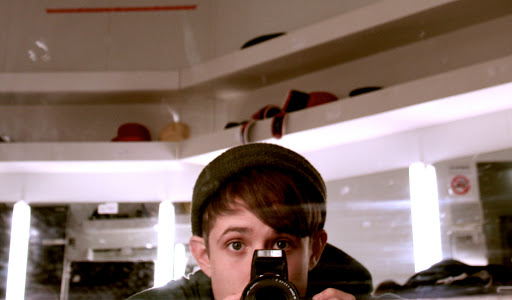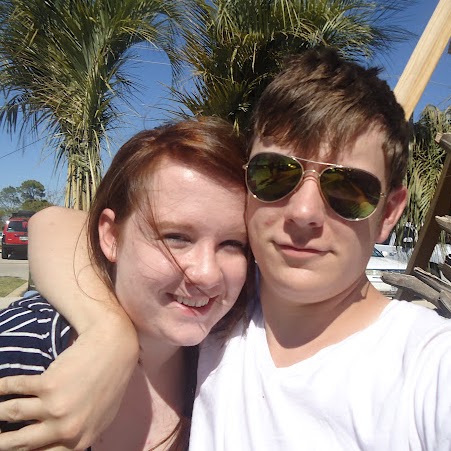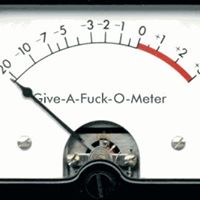James Ross Thacker
age ~70
from Wildwood, MO
- Also known as:
-
- James R Thacker
- Jim R Thacker
- James R James
- Phone and address:
-
4529 Thunder Ridge Rd, Wildwood, MO 63025
6365872348
James Thacker Phones & Addresses
- 4529 Thunder Ridge Rd, Eureka, MO 63025 • 6365872348
- Wildwood, MO
- Burkesville, KY
- Homer, AK
- Montrose, CA
- Lake Jackson, TX
- Saint Louis, MO
Specialities
General Practice
Resumes

James Thacker
view source
James Thacker
view source
James Thacker
view sourceLocation:
United States

James Thacker
view sourceLocation:
United States

James Thacker
view sourceLocation:
United States
Lawyers & Attorneys

James Thacker - Lawyer
view sourceSpecialties:
General Practice
ISLN:
922503222
Admitted:
2012
University:
University of Arkansas Little Rock School of Law, AR; CA; University of California at Los Angeles, CA
Isbn (Books And Publications)

Effective Training: Systems, Strategies, and Practices
view sourceAuthor
James W. Thacker
ISBN #
0130327395

Effective Training: Systems, Strategies and Practices
view sourceAuthor
James W. Thacker
ISBN #
0131860119

Effective Training : Systems, Strategies and Practices
view sourceAuthor
James W. Thacker
ISBN #
0132681609
Name / Title
Company / Classification
Phones & Addresses
Alaska Lodging & Vacation Rentals LLC
3685 Sterling Hwy, Homer, AK 99603
Baycrest Development LLC
3685 Sterling Hwy, Homer, AK 99603
2J HOME IMPROVEMENT, LLC
SATELLITE INSTALLATIONS GROUP, LLC
Owner, Principal
Baycrest Development LLC
Management Services
Management Services
4529 Thunder Rdg Rd, Wildwood, MO 63025
JM SESAME, INC
ALIVE IN THE SPIRIT MINISTRIES, INC
Us Patents
-
Implantable Cardiac Stimulation Device And Method Utilizing Electrogram Spectral Analysis For Therapy Administration
view source -
US Patent:6622042, Sep 16, 2003
-
Filed:May 9, 2001
-
Appl. No.:09/852884
-
Inventors:James R. Thacker - Eureka MO
-
Assignee:Pacesetter, Inc. - Sylmar CA
-
International Classification:A61N 1365
-
US Classification:607 14, 600518
-
Abstract:An implantable cardiac stimulation device and method utilizes electrogram spectral analysis to administer electrical stimulation therapy to a heart to treat accelerated arrhythmias of the heart. The device includes an arrhythmia detector that initially detects an accelerated arrhythmia of the heart. An acquisition system then acquires an electrogram of the heart having both atrial and ventricular depolarization components. A processor then spectral analyzes the electrogram to provide spectral data related to the accelerated arrhythmia. The spectral data may be used for arrhythmia discrimination, arrhythmia tolerance discernment, and/or by a pulse generator to control stimulation therapy delivery timing.
-
Monitoring, Preventing, And Treating Rejection Of Transplanted Organs
view source -
US Patent:6970741, Nov 29, 2005
-
Filed:Sep 17, 2002
-
Appl. No.:10/246554
-
Inventors:Todd K. Whitehurst - Frazier Park CA, US
James P. McGivern - Stevenson Ranch CA, US
Kelly H. McClure - Simi Valley CA, US
Goran N. Marnfeldt - Valencia CA, US
James R. Thacker - Eureka MO, US -
Assignee:Advanced Bionics Corporation - Valencia CA
-
International Classification:A61N001/00
A61M005/00 -
US Classification:607 3, 607 63, 128899
-
Abstract:An implantable system control unit (SCU) includes means for measuring tissue impedance or other condition to determine allograft health, in order to predict or detect allograft rejection. The SCU also includes at least two electrodes coupled to means for delivering electrical stimulation to a patient within whom the device is implanted, and may also include a reservoir for holding one or more drugs and a driver means for delivering the drug(s) to the patient. In certain embodiments, the system is capable of open- and closed-loop operation. In closed-loop operation, at least one SCU includes a sensor, and the sensed condition is used to adjust stimulation parameters. Alternatively, this sensory “SCU” sounds an alarm, communicates an alarm to an external device, and/or is responsive to queries regarding sensed information, such as tissue impedance.
-
Apparatus And Method For Determining The Relative Position And Orientation Of Neurostimulation Leads
view source -
US Patent:6993384, Jan 31, 2006
-
Filed:Dec 3, 2002
-
Appl. No.:10/310202
-
Inventors:Kerry Bradley - Glendale CA, US
James R. Thacker - Eureka MO, US -
Assignee:Advanced Bionics Corporation - Valencia CA
-
International Classification:A61N 1/00
-
US Classification:607 2
-
Abstract:Interelectrode impedance or electric field potential measurements are used to determine the relative orientation of one lead to other leads in the spinal column or other body/tissue location. Interelectrode impedance is determined by measuring impedance vectors. The value of the impedance vector is due primarily to the electrode-electrolyte interface, and the bulk impedance between the electrodes. The bulk impedance between the electrodes is, in turn, made up of (1) the impedance of the tissue adjacent to the electrodes, and (2) the impedance of the tissue between the electrodes. In one embodiment, the present invention makes both monopolar and bipolar impedance measurements, and then corrects the bipolar impedance measurements using the monopolar measurements to eliminate the effect of the impedance of the tissue adjacent the electrodes. The orientation and position of the leads may be inferred from the relative minima of the corrected bipolar impedance values. These corrected impedance values may also be mapped and stored to facilitate a comparison with subsequent corrected impedance measurement values.
-
Neural Stimulation Lead Fixation
view source -
US Patent:7099718, Aug 29, 2006
-
Filed:May 24, 2002
-
Appl. No.:10/155146
-
Inventors:James R. Thacker - Eureka MO, US
David K. L. Peterson - Saugus CA, US
James P. McGivern - Stevenson Ranch CA, US
Michael S. Colvin - Malibu CA, US -
Assignee:Advanced Bionics Corporation - Valencia CA
-
International Classification:A61N 1/05
-
US Classification:607117
-
Abstract:An implantable lead having at least one electrode contact at or near its distal end prevents undesirable movement of the electrode contact from its initial implant location. One embodiment relates to a spinal cord stimulation (SCS) lead. A balloon may be positioned on the electrode lead array. The balloon is filled with air, liquid or a compliant material. When inflated, the balloon stabilizes the lead with respect to the spinal cord and holds the lead in place. The pressure of the balloon is monitored or otherwise controlled during the filling process in order to determine at what point the filling process should be discontinued. An elastic aspect of the balloon serves as a contained relief valve to limit the pressure the balloon may place on the surrounding tissues when the epidural space is constrained.
-
Treatment Of Hypertension
view source -
US Patent:7155284, Dec 26, 2006
-
Filed:Jan 16, 2003
-
Appl. No.:10/346538
-
Inventors:Todd K Whitehurst - Santa Clarita CA, US
Kelly H. McClure - Simi Valley CA, US
James R Thacker - Eureka MO, US
James P McGivern - Stevenson Ranch CA, US -
Assignee:Advanced Bionics Corporation - Valencia CA
-
International Classification:A61N 1/18
-
US Classification:607 44, 6048911, 607 3
-
Abstract:Treatment of hypertension includes implantation of the discharge portion(s) of a catheter and/or electrical stimulation electrode(s) adjacent the tissue(s) to be stimulated. Stimulation pulses, i. e. , drug infusion pulses and/or electrical pulses, are supplied by one or more implanted stimulators, through the catheter and possibly also a lead, tunneled subcutaneously between the stimulator and stimulation site. A microstimulator(s) may also/instead deliver electrical stimulation pulses. Stimulation sites include the carotid sinus and carotid body, among other locations. Treatments include drugs used for acute and/or chronic treatment of hypertension. In a number of embodiments, a need for or response to treatment is sensed, and the electrical and/or infusion pulses adjusted accordingly.
-
Implantable System Having Rechargeable Battery Indicator
view source -
US Patent:7177690, Feb 13, 2007
-
Filed:Jan 31, 2003
-
Appl. No.:10/356414
-
Inventors:Carla Mann Woods - Los Angeles CA, US
James R Thacker - Eureka MO, US
David K. L Peterson - Saugus CA, US -
Assignee:Advanced Bionics Corporation - Sylmar CA
-
International Classification:A61N 1/378
-
US Classification:607 29, 607 33, 607 61
-
Abstract:A system and method for detecting the status of a rechargeable battery included within an implantable medical device. The medical device can incorporate a status indicator which signals the user concerning the battery status, e. g. , low battery level. The signal may be audible or it may arise from an electrical stimulation that is perceptually distinguished from the operative, therapeutic stimulation. The external programmer may also incorporate a second battery status indicator that is visual, audible, or physically felt. Battery status data may be conveyed on visual displays on the external programmer by uploading this information from the medical device using a bi-directional telemetry link. Such battery status data are helpful to the user to indicate when the battery should be recharged and to the clinician to monitor patient compliance and to determine end-of-useful life of the rechargeable battery.
-
Neural Stimulation System Providing Auto Adjustment Of Stimulus Output As A Function Of Sensed Pressure Changes
view source -
US Patent:7239920, Jul 3, 2007
-
Filed:Feb 11, 2003
-
Appl. No.:10/364434
-
Inventors:James R Thacker - Eureka MO, US
Carla Mann Woods - Los Angeles CA, US -
Assignee:Advanced Bionics Corporation - Sylmar CA
-
International Classification:A61N 1/00
-
US Classification:607 46
-
Abstract:A neural stimulation system automatically corrects or adjusts the stimulus magnitude in order to maintain a comfortable and effective stimulation therapy. Auto correction of the stimulus magnitude is linked to the measurement of pressure in the vicinity of the electrode-tissue interface. Because the pressure near the electrode-tissue interface can provide a measure of the electrode contacts' proximity to the neural tissue, and hence quantity of electrical energy delivered to the neural tissue, a change in the measured pressure or pressure morphology indicates that the stimulation energy may need to be adjusted. Hence, changes in pressure provide a feedback mechanism that permit the system to effectively auto correct the stimulus amplitude in order to maintain a desired therapeutic effect.
-
Thrombolysis And Chronic Anticoagulation Therapy
view source -
US Patent:7308303, Dec 11, 2007
-
Filed:Nov 1, 2002
-
Appl. No.:10/285803
-
Inventors:Todd K Whitehurst - Frazier Park CA, US
Kelly H McClure - Simi Valley CA, US
James R Thacker - Eureka MO, US -
Assignee:Advanced Bionics Corporation - Valencia CA
-
International Classification:A61N 1/00
A61M 5/00 -
US Classification:607 3
-
Abstract:Thrombolytic and/or anticoagulation therapy of the present invention includes implantation of the discharge portion(s) of a catheter and, optionally, one or more electrodes on a lead, adjacent tissue(s) to be stimulated. Stimulation pulses, i. e. , drug infusion pulses and optional electrical pulses, are supplied by a stimulator implanted remotely, and through the catheter or lead, which is tunneled subcutaneously between the stimulator and stimulation site. Stimulation sites include the coronary arteries, coronary veins, cerebral arteries, other blood vessels, chambers of the heart, mesenteric vessels, deep vessels of the leg, and other locations. Disclosed treatments include drugs used for chronic treatment and/or prevention of thromboembolic disease, for acute treatment of thromboembolic disease, for acute treatment of thrombosis, and combinations of these. The invention reduces or eliminates the incidence of thromboembolic disease and related morbidities, improve symptoms resulting from thromboembolic disease, and improve patient quality of life.
Plaxo

James Thacker
view sourceSprint
Classmates

James Thacker
view sourceSchools:
Nichols Junior High School Biloxi MS 1978-1981
Community:
Thomas Lee, Shirley Odums

James Thacker
view sourceSchools:
Albemarle High School Charlottesville VA 1982-1986
Community:
Jane Owen, Brenda Chidester

James Thacker
view sourceSchools:
Johns Creek Elementary School Pikeville KY 1959-1960, Kimper Elementary School Kimper KY 1959-1961, Williams Elementary School Rochester NY 1962-1966
Community:
Lilly Kuiper, Phil Reames

James Thacker
view sourceSchools:
Maricopa High School Maricopa AZ 1990-1994
Community:
Alma Kerby, Louie Pisano, Guillermo Tarango

James Thacker
view sourceSchools:
Carson High School Carson CA 1988-1992
Community:
Terry Wheeler, Brandye Olson, James Cast

James Thacker
view sourceSchools:
Marlette High School Marlette MI 1993-1997
Community:
Walker Guthrie

James Thacker
view sourceSchools:
Starkweather High School Starkweather ND 1968-1972
Community:
Carol Holmes

James Thacker
view sourceSchools:
Jefferson High School Roanoke VA 1948-1952
Community:
Stanley Weinberg, Dawn Moore, C Markley, Shirley Lloyd, Dennis Dyer, Barbara Mills, Betty Shelton, Carl Perdue, Jeannine Kittinger, Joyce Sink, David Barranger, Harold Hall
Youtube
Myspace
Googleplus

James Thacker
Education:
University of Sheffield
About:
You have found James Thacker Mountain Guide and Mountaineering Instructor on Google..

James Thacker
Tagline:
Music Connoisseur

James Thacker

James Thacker

James Thacker

James Thacker

James Thacker

James Thacker

James Keith Thacker
view source
James Thacker
view source
Jim Thacker
view source
Michael James Thacker
view source
Jesse James Thacker
view source
James Thacker Taylor
view source
James Thacker
view source
James H Thacker
view sourceFlickr
Get Report for James Ross Thacker from Wildwood, MO, age ~70



















